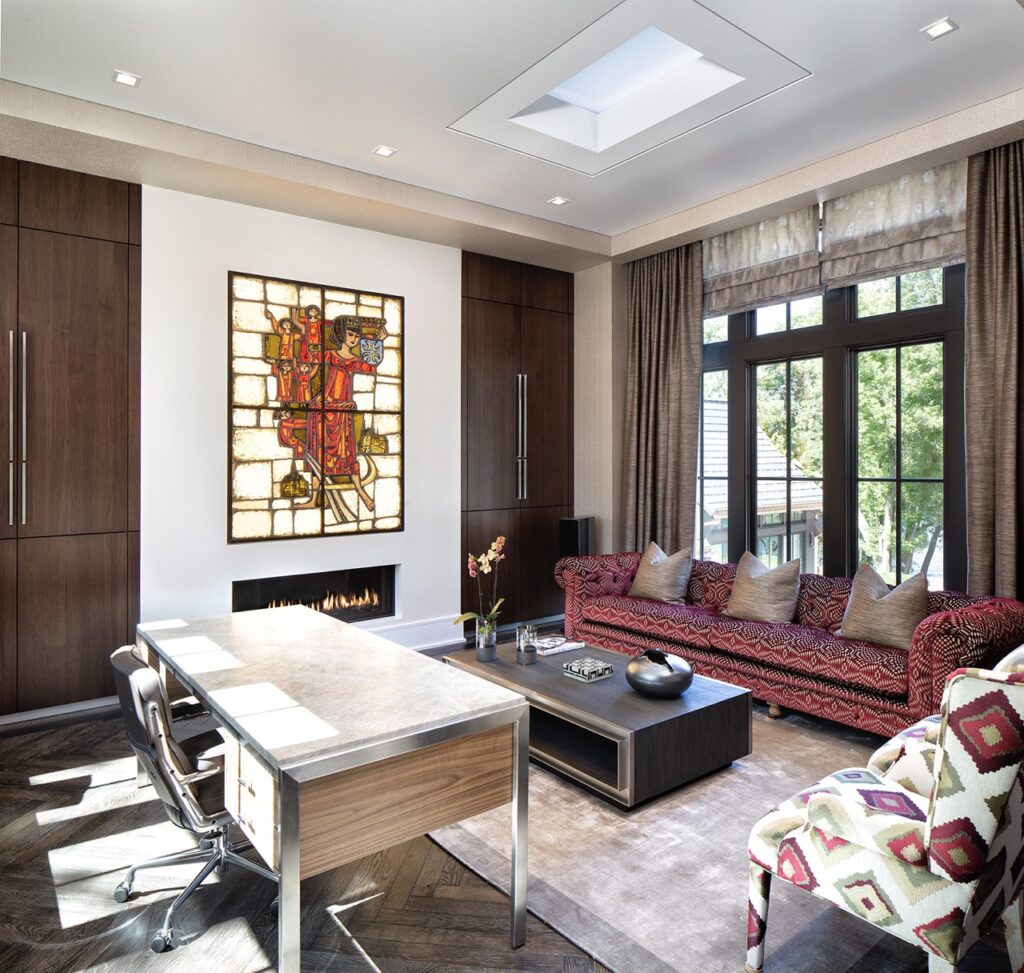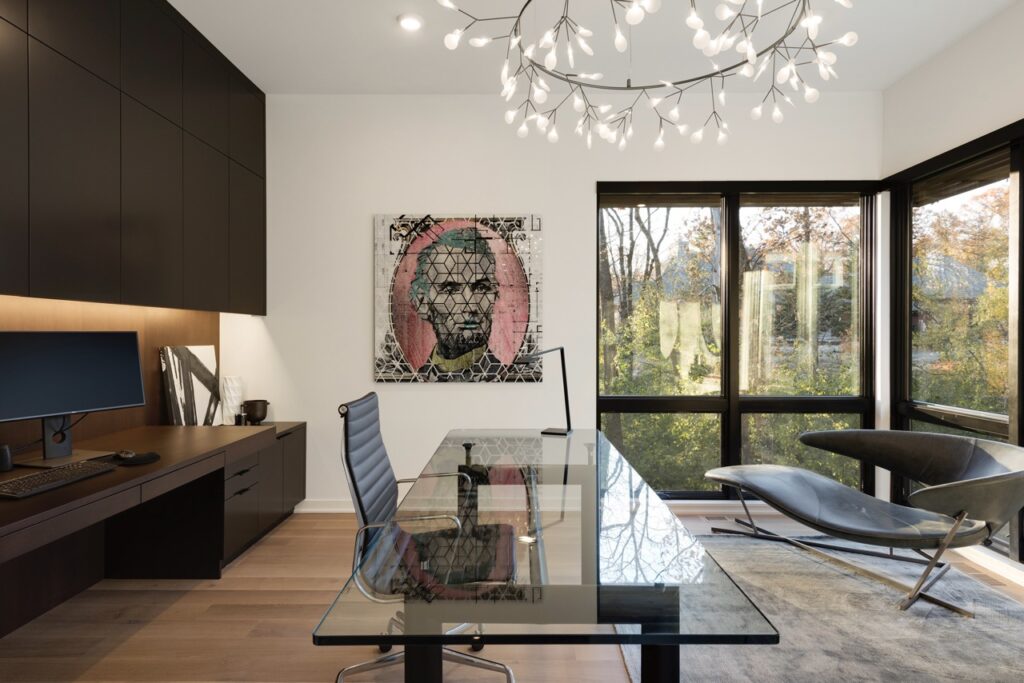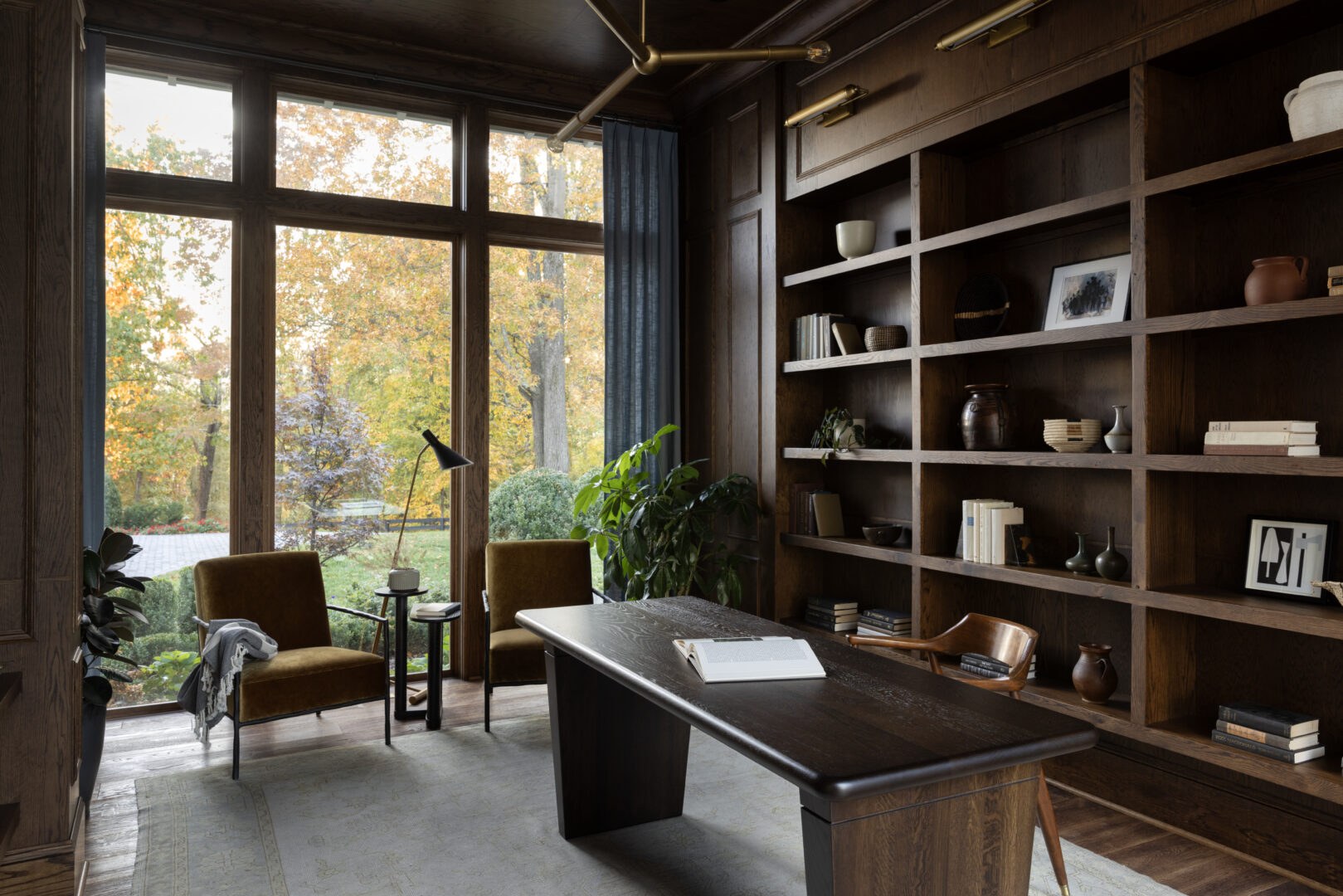At-home work setups don’t have to be relegated to a dark basement corner or a sliver of space on your kitchen island. As people continue to work from home, they’re investing in dedicated offices built to increase concentration, encourage productivity, and make it easier to connect with coworkers and clients around the globe. Read on to learn more about the high-end features local housing professionals are bringing to Twin Cities homes.
Quiet and private locations. When it comes to designing a home office space, “a priority is choosing the location — not only in the house but also where that falls on the property. Privacy, quietness, and views are important,” says Andy Johnsrud, new home and major remodeling sales for Lecy Bros. Homes & Remodeling. High-end homes are even incorporating soundproofing elements into walls and doors, he adds.
Expansive windows. Natural light is known to improve productivity and promote relaxation, so before you begin building your office, think about where your space would benefit the most from increased light and at what times of the day. “Consider choosing a picture window or skylight to bring in lots of sunlight and picturesque views,” says the team at Marvin. “Nature-inspired influences and biophilic design continue to be seen in the home with homeowners opting for larger windows to promote an indoor-outdoor connection.”
Chad Rushin, director of construction for Nor-Son Custom Builders, also notes a trend toward expansive windows. Nor-Son recently converted an upper-level room into an office with “dormer windows that were expanded to bring in natural light and magnificent views of Sunfish Lake.”

Smart lighting. While natural light is crucial, ambient, task, and accent lighting is also needed for high-end home offices — especially if your job entails long hours before sunrise and after sunset. Amy Hendel, principal of Hendel Homes, recalls an installation she did for one client using a CoeLux ceiling light that emulates the sun: “It’s a large unit, about 8-by-5 feet, installed in the ceiling trusses,” she says. “This homeowner has video calls around the world, so having a bright space at all times was important.”
High-quality technology. Having the right technology to be able to execute your job remotely is the most important aspect of designing a high-end home office. Whether you’re frequently hosting video conferences, downloading large data sets, or managing multiple projects, you may want to outfit your space with tools like multiple monitors or a smart desk that encourages standing work time and reminds you of upcoming appointments. Smart home and tech companies can help install luxe features such as AI-based voice control, advanced networking solutions, motorized shades, and even a golf simulator when you need a break from the daily grind.

Ample storage space. Nothing ruins the aesthetic of a high-end office space like papers scattered everywhere or tangled computer cords. Your blueprints should include a plan to store and conceal these items. “Think of your entire day and how you work in your home office. Think of storage needs and cozy nooks you would want to spend time in,” says Hendel. “Measure how much filing space you need. We all still need space to file the paper in our life.”
Multiple offices. Many high-end homes feature two offices to accommodate dual-remote-working households. These may both be located in the home, but a growing trend is accessory dwelling units, which create dedicated space separate from the home but on the same property. “These smaller, standalone units first gained popularity as ‘he/she sheds’ but are now used to create entirely new spaces, like home offices,” says Marvin.

Multifunctional layouts. Working isn’t the only activity taking place in home offices. Many homeowners opt for spaces that are multifunctional and universal to meet their work and play needs. Creating a home office that also serves as “a place to sit and have a cup of coffee or a glass of wine while reading a book is good for design and function,” says Hendel.






